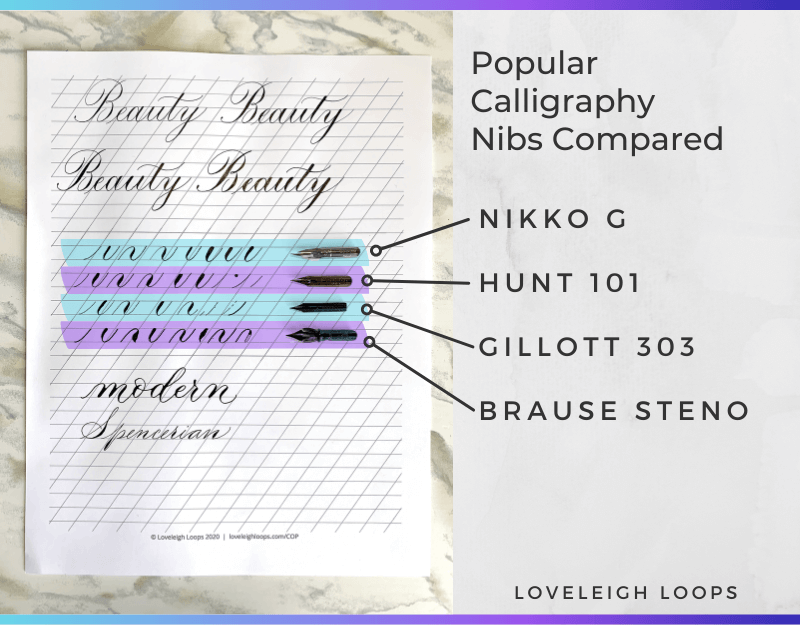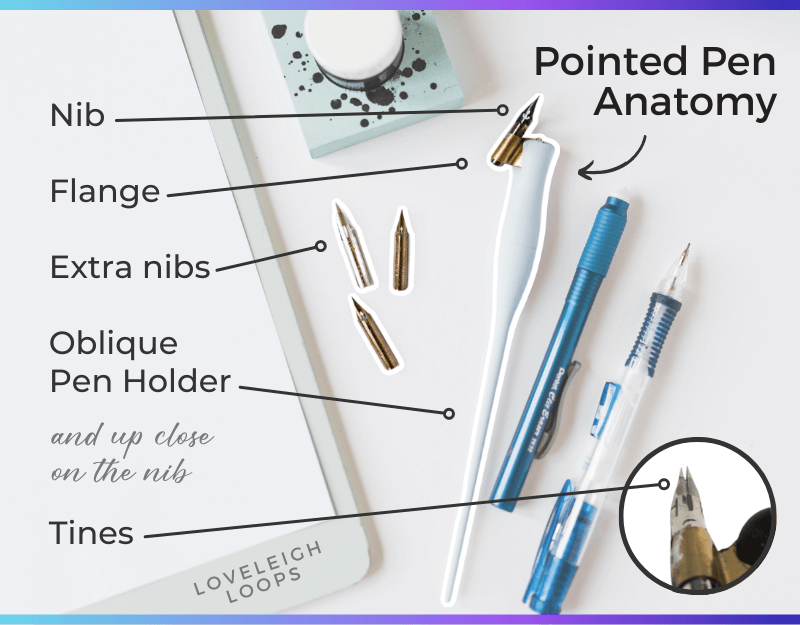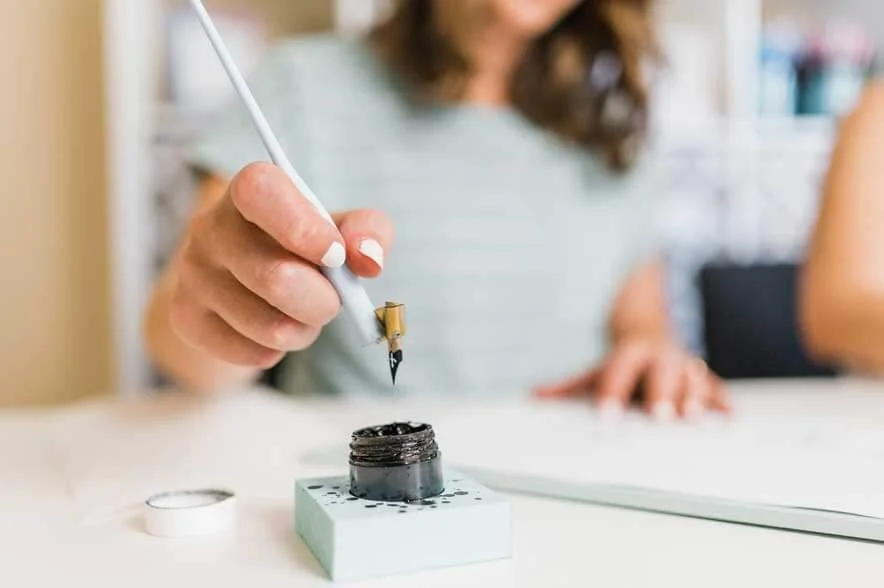Top Supply Picks for Traditional Calligraphy
Traditional calligraphy is a timeless art that has been around for ages and it’s what we first learned that instilled a love of hand lettering as young kids. Because we’ve been practicing the art for so long, we’ve tried a lot of different pens. Countless pens. So many supplies for traditional calligraphy work.
Whether you’re a beginner or looking to find a new tool to try out, we’ve spent a lot of time (and money) doing the legwork for you.
We did a review, Tournament style, of some of the best and most popular brush pens. Now we’d like to introduce you to some of our favorite pens for more traditional calligraphy styles.
Pin it for later! ↓
Table of Contents
Nibs for Calligraphy
Ready to dive into calligraphy but not sure what tools you need to get started? Let's look at some of the supplies used for traditional calligraphy.
We suggest starting with the nib because that’s what ultimately is going to give you the lines and design you’re looking for.
Nikko G
The Nikko G nibs are good for beginners and come three in a box for those of you who want to try them out with limited investment.
Some heavy-handed users may find that they go through nibs quickly but we find these are a good starting point for those new to calligraphy.
Hunt 101
These flexible nibs are great for both calligraphy and other drawing projects and ornamental work. You can get thin hairlines since the tip is very sharp, but that also leads to a higher chance of snagging on the paper.
Learn More: How To Choose The Best Calligraphy Nibs [Guide]
Pen Holders for Calligraphy
If you’re going to purchase calligraphy nibs, you need a pen holder to go with it.
There are a lot of different options and you really need to choose one that feels good in your hand.
Pay attention when you’re shopping for pen holders to ensure it accommodates the nibs you like to use.
Oblique
These are beautiful pen holders with ornate designs that truly look old world. And if you order from this site, you can request specific wood finishes so you can get exactly what you want (as long as it’s available).
You may also like: Favorite Lettering Supplies
Straight
Lefties seem to get left out in the calligraphy world, but we haven’t forgotten about you! This pen holder is a durable plastic and the straight design makes it ideal for lefties (though right handed calligraphers love it too). The price makes it worth trying out. Either way, don’t spend a lot of money on your pen holder if you’re a beginner. Instead, try out different styles. When you’re ready, we love the Moblique penholder. It allows you to switch between oblique and straight, there’s a fun secret storage compartment for nibs, and it’s available in some really pretty colors!
You may also like: Spencerian Script Beginner’s Guide
You may also like: How To Use A Pointed Pen
Best Ink for Pointed Pen Calligraphy
You have a lot of choices when it comes to calligraphy ink. Sumi ink is nice and opaque and has a nice shine when it dries. It’s a great black ink to practice with.
You’ll want to pour the Sumi ink into a small jar because you can’t dip your pen directly into the ink container. Fill the container about two-thirds of the way with ink then top off with water to dilute it slightly.
Another good option for practicing is Walnut Ink. The consistency is thinner than Sumi Ink, and it has a beautiful sepia color. For white ink, Dr. Ph Martin’s Bleedproof White is the best to use on black or colored paper.
Of course, there are a number of metallic and colored inks, but we recommend starting with plain black before you invest in different colors.
You’ll get some practice in and you’ll likely get inspired to do that fun and colorful project--but you’ll save money as you learn the style if you stick with black ink for now.
You may also like: Copperplate Majuscules Beginner’s Guide
Don’t Forget the Paper
Without quality paper as part of your traditional calligraphy supplies, the nib, pen holder and ink don’t really matter much. You can’t simply pull the paper out of your at-home printer or notebook and expect to get great results. Some papers are smooth to the touch and others have more grain to them. If your paper is too thin, the ink might bleed. Get the wrong paper and you can potentially damage your nib.
It’s important to practice on paper with guidelines to keep your lines straight and your letters slanted at a consistent angle. First, download our free guide sheets:
Copperplate Guide Sheets
There are two options we recommend for using the guide sheets. You can print the PDF directly on high-quality paper, such as HP Premium 32lb paper. Another option is to print the guide sheet on any paper and then use Canson Marker Paper on top. The marker paper is slightly transparent which will allow you to see the guides through it. Both papers are very smooth so your nib won’t snag.
If you’re using a dark colored paper, you’ll need to draw your own guide lines in pencil. This is the black paper we recommend. It works wonderfully with this white ink.
Learn More: Best Calligraphy Paper (Comparisons And Recommendations)
We’re always looking for new tools and supplies to add to our collections and to help us teach you more about the art of calligraphy.
No matter what stage you’re at in your calligraphy journey, there’s always space for practicing your craft. But first, what type of calligraphy are you ready to learn? Take our quiz to find out!






